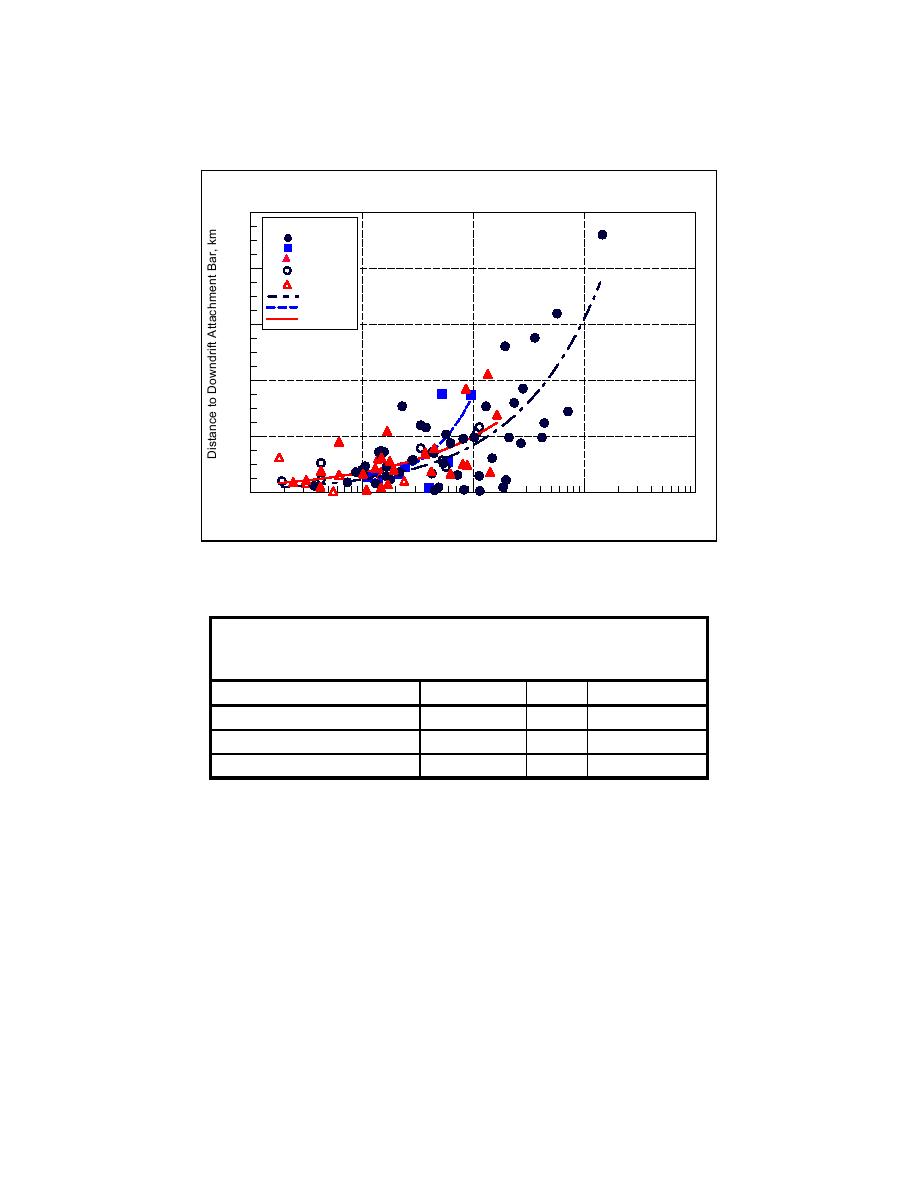
ERDC/CHL CHETN-IV-33
June 2001
generally, changes to the entire ebb shoal complex and channel can be expected if one of the
dynamic or static controlling factors changes.
Distance to Downdrift Attachment Bar vs. Tidal Prism
Nautical Chart (NC) and Aerial Photograph (AP) Data
10
No. of Jetties
0 - NC
1 - NC
2 - NC
8
0 - AP
2 - AP
0 trendline
1 trendline
2 trendline
6
4
2
0
106
107
108
109
1010
Tidal Prism m 3
Figure 4. The distance WA2 vs. tidal prism for inlets examined
Table 1
Coefficients of Equation 2 for Trend Lines in Figure 4 (downdrift
attachment bar)
2
a
b
R
Number of Jetties
-5
0
4.8x10
0.569
0.767
-8
1
3.0x10
1.011
0.765
-4
2
5.0x10
0.451
0.592
For distances to the downdrift attachment bar less than 2 km, Figure 4 indicates wide scatter over
two orders of magnitude in the tidal prism. The scatter pertains mainly to inlets with either no
jetties or with two jetties. At inlets with two jetties and small tidal prism, the bypassing bar or
ebb shoal may attach directly to the jetties, such as the case of Boca Raton Inlet on the east coast
of Florida; similar site-specific processes probably account for much of the scatter. At inlets
without jetties, the phenomenon of atypically small distance to the attachment bar for the
associated tidal prism may have several causes. One cause is discussed here by the specific
example Oregon Inlet, NC. This inlet has a distance to the downdrift attachment bar less than
1 km but a tidal prism greater than 108 m3.
Oregon Inlet, NC, exhibits an atypically small distance to the downdrift attachment bar in
relation to the tidal prism. A terminal groin was constructed on the south (downdrift side) in
1990. However, aerial photographs of Oregon Inlet examined here predate 1990, and the inlet
8


 Previous Page
Previous Page
